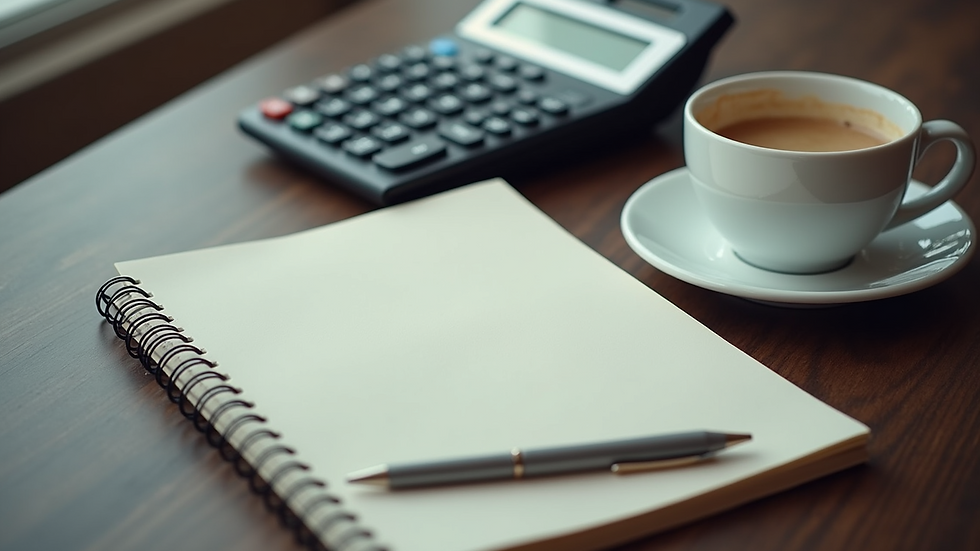Simplify Budgeting with Flourafi Tools
- Flourish Finance
- Aug 11
- 3 min read
Managing your finances can feel overwhelming, especially when you have multiple goals like improving credit, buying a home, or growing a business. The key to financial confidence lies in effective budgeting. Fortunately, technology has made it easier than ever to take control of your money. Using the best personal budgeting tools can help you track expenses, plan savings, and make smarter financial decisions.
Budgeting is not just about cutting costs; it’s about understanding where your money goes and aligning your spending with your priorities. Whether you are a first-time homebuyer, an entrepreneur seeking funding, or a family aiming to manage monthly expenses better, the right tools can simplify this process and empower you to reach your goals faster.
Discover the Best Personal Budgeting Tools for Your Financial Journey
Choosing the right budgeting tool depends on your unique needs and lifestyle. Some tools focus on expense tracking, while others offer credit monitoring or funding advice. The best personal budgeting tools combine these features to provide a comprehensive financial overview.
Here are some features to look for in top budgeting tools:
User-friendly interface: Easy navigation helps you stay consistent.
Expense categorization: Automatically sorts your spending into categories like groceries, bills, and entertainment.
Goal setting: Allows you to set savings targets or debt repayment plans.
Alerts and reminders: Keeps you on track with notifications about upcoming bills or overspending.
Integration with bank accounts: Syncs your transactions for real-time updates.
Credit score monitoring: Helps you understand and improve your credit health.
Using personal budgeting tools by flourafi offers a tailored experience that combines budgeting with credit improvement and funding strategies. This integrated approach is ideal for individuals and small business owners who want to build lasting financial stability.

How Do I Create My Personal Budget?
Creating a personal budget might seem daunting, but breaking it down into simple steps makes it manageable. Here’s a practical guide to get started:
Calculate your total income: Include all sources such as salary, freelance work, and passive income.
List your fixed expenses: Rent, utilities, loan payments, and insurance premiums.
Track variable expenses: Groceries, dining out, entertainment, and transportation.
Set financial goals: Short-term (emergency fund), medium-term (home down payment), and long-term (retirement savings).
Allocate funds: Assign portions of your income to each category, prioritizing essentials and goals.
Monitor and adjust: Review your budget weekly or monthly to stay on track and make changes as needed.
Using digital tools can automate much of this process. For example, many apps allow you to link your bank accounts, automatically categorize expenses, and visualize your spending patterns with charts and graphs.

Practical Tips to Maximize Your Budgeting Success
Budgeting is a dynamic process that requires commitment and flexibility. Here are some actionable recommendations to help you succeed:
Automate savings: Set up automatic transfers to your savings account right after payday.
Use cash envelopes: For categories like dining out or entertainment, use cash to limit spending.
Review subscriptions: Cancel unused or unnecessary services to free up funds.
Plan for irregular expenses: Set aside money monthly for annual costs like insurance or holiday gifts.
Involve your family: Share budgeting goals and progress to encourage collective responsibility.
Leverage rewards: Use credit cards with cashback or points wisely to benefit your budget.
By combining these strategies with the right tools, you can create a sustainable budget that adapts to your changing financial situation.

How FlouraFi Tools Enhance Your Budgeting Experience
FlouraFi’s budgeting tools are designed to empower you with expert credit solutions and personalized support. Their platform integrates budgeting with credit monitoring and funding advice, making it a one-stop solution for financial growth.
Key benefits include:
Personalized budgeting plans: Tailored to your income, expenses, and goals.
Credit improvement guidance: Helps you understand your credit report and take steps to boost your score.
Funding strategies: Access to resources and advice for securing loans or business funding.
Educational resources: Articles, webinars, and tips to improve financial literacy.
User-friendly interface: Simplifies complex financial data into actionable insights.
Using personal budgeting tools by flourafi can help you build a strong financial foundation, whether you are managing household expenses or growing a business.
Taking the Next Step Toward Financial Confidence
Budgeting is the cornerstone of financial health. By using the best personal budgeting tools, you gain clarity and control over your money. This clarity enables you to improve your credit, save for important milestones, and access funding opportunities with confidence.
Start by choosing a budgeting tool that fits your lifestyle and financial goals. Commit to regular reviews and adjustments to keep your plan relevant. Remember, budgeting is not about restriction but about empowerment.
With the right tools and strategies, you can transform your financial future and achieve lasting stability and growth.
Explore how personal budgeting tools by flourafi can simplify your budgeting process and support your journey to financial success.




Comments